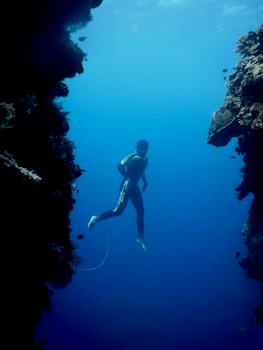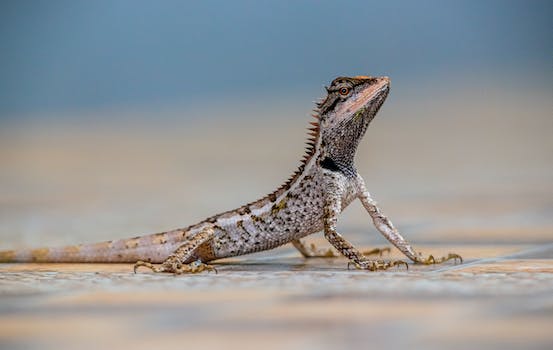

-
Table of Contents
Unveiling the Harmonious Dance of Nature and Life.
Introduction
Exploring the interplay between nature and life involves examining the intricate relationship and interactions between the natural world and living organisms. This interdisciplinary field of study encompasses various scientific disciplines, including ecology, biology, environmental science, and even philosophy. By investigating how nature influences life and vice versa, researchers aim to gain a deeper understanding of the complex dynamics that shape our planet and the organisms that inhabit it. Through this exploration, we can uncover the profound interconnectedness between nature and life, highlighting the importance of preserving and protecting our natural environment for the well-being of all living beings.
The Impact of Nature on Human Well-being: Exploring the Connection
Exploring the Interplay between Nature and Life
The Impact of Nature on Human Well-being: Exploring the Connection
Nature has always played a significant role in human life. From the earliest civilizations to the modern era, people have relied on nature for sustenance, shelter, and inspiration. However, in recent times, there has been a growing recognition of the impact that nature has on human well-being. This article aims to explore the interplay between nature and life, specifically focusing on the connection between nature and human well-being.
Numerous studies have shown that spending time in nature can have a positive impact on our mental and physical health. The calming effect of natural environments has been found to reduce stress, anxiety, and depression. In fact, a study conducted by researchers at Stanford University found that walking in nature can lead to a decrease in rumination, a pattern of negative thinking associated with mental health issues. This suggests that nature has the power to improve our mood and overall well-being.
Furthermore, exposure to nature has been linked to improved cognitive function. Research has shown that spending time in natural environments can enhance attention span, memory, and creativity. This is particularly relevant in today's fast-paced, technology-driven world, where our attention is constantly being pulled in multiple directions. Taking a break from screens and immersing ourselves in nature can help restore our cognitive abilities and improve our ability to focus.
The impact of nature on physical health should not be overlooked either. Studies have found that being in nature can lower blood pressure, reduce the risk of heart disease, and boost the immune system. The natural environment provides opportunities for physical activity, whether it's hiking, biking, or simply taking a leisurely stroll. Engaging in these activities not only promotes physical fitness but also allows us to connect with nature on a deeper level.
Moreover, nature has the power to foster social connections and strengthen communities. Parks, gardens, and other green spaces serve as gathering places where people can come together, engage in activities, and build relationships. Research has shown that individuals who live in close proximity to green spaces are more likely to engage in social interactions and experience a sense of belonging. This sense of community can have a positive impact on mental health and overall life satisfaction.
In addition to the direct impact on human well-being, nature also plays a crucial role in environmental sustainability. The preservation and conservation of natural resources are essential for the long-term survival of our planet. By recognizing the value of nature and taking steps to protect it, we are not only ensuring our own well-being but also that of future generations.
In conclusion, the interplay between nature and life is undeniable. The impact of nature on human well-being is multifaceted, encompassing mental, physical, and social aspects. From reducing stress and improving cognitive function to fostering social connections and promoting environmental sustainability, nature has a profound influence on our lives. As we continue to explore this connection, it is crucial that we prioritize the preservation and conservation of nature for the benefit of both current and future generations.
Biodiversity and its Role in Sustaining Life on Earth

Biodiversity, the variety of life on Earth, is a fundamental aspect of our planet's ecosystems. It encompasses the incredible array of species, genes, and ecosystems that exist, and plays a crucial role in sustaining life on Earth. Understanding the interplay between nature and life is essential for preserving biodiversity and ensuring the long-term survival of our planet.
Biodiversity is not just about the number of different species that exist, but also about the interactions between them and their environment. Each species has a unique role to play in the ecosystem, and these roles are interconnected in a complex web of relationships. For example, plants provide food and shelter for animals, while animals help to pollinate plants and disperse their seeds. This interdependence is what allows ecosystems to function and thrive.
One of the key benefits of biodiversity is its role in maintaining ecosystem stability. A diverse ecosystem is more resilient to disturbances, such as climate change or natural disasters. This is because different species have different adaptations and abilities to cope with change. If one species is unable to survive in a changing environment, others may be able to fill the gap and maintain the overall functioning of the ecosystem. In this way, biodiversity acts as a form of insurance against environmental uncertainty.
Biodiversity also provides a range of ecosystem services that are essential for human well-being. These services include the provision of food, clean water, and air, as well as the regulation of climate and disease. For example, forests help to regulate the climate by absorbing carbon dioxide and releasing oxygen, while wetlands act as natural filters, purifying water and reducing the risk of flooding. Without these services, our lives would be significantly impacted, and our ability to survive and thrive would be compromised.
However, biodiversity is currently facing unprecedented threats. Human activities, such as deforestation, habitat destruction, pollution, and climate change, are causing a rapid decline in species and ecosystems worldwide. This loss of biodiversity not only has ecological consequences but also economic and social impacts. For example, the loss of pollinators, such as bees, could have a devastating effect on agriculture and food production.
To address these challenges, it is crucial that we take action to protect and restore biodiversity. This requires a combination of conservation efforts, sustainable land and resource management, and international cooperation. Protected areas, such as national parks and nature reserves, play a vital role in preserving biodiversity by providing safe havens for species and ecosystems. Additionally, sustainable practices, such as organic farming and responsible fishing, can help to reduce the negative impacts of human activities on biodiversity.
Education and awareness are also key to promoting biodiversity conservation. By understanding the value and importance of biodiversity, individuals and communities can make informed choices and take action to protect the natural world. This can include supporting local conservation initiatives, reducing our ecological footprint, and advocating for stronger environmental policies.
In conclusion, biodiversity is essential for sustaining life on Earth. It provides ecosystem stability, essential ecosystem services, and is a source of inspiration and wonder. However, biodiversity is under threat, and urgent action is needed to protect and restore it. By understanding the interplay between nature and life, and taking steps to conserve biodiversity, we can ensure a sustainable future for ourselves and future generations.
Nature's Influence on Creativity and Innovation
Nature's Influence on Creativity and Innovation
Nature has long been a source of inspiration for artists, writers, and thinkers throughout history. Its beauty, complexity, and ever-changing landscapes have captivated the human imagination and sparked countless creative endeavors. But beyond its aesthetic appeal, nature also plays a crucial role in fostering creativity and innovation in various fields.
One way in which nature influences creativity is through its ability to stimulate the senses. The sights, sounds, and smells of the natural world can awaken our senses and ignite our imagination. The vibrant colors of a sunset, the soothing sound of waves crashing on the shore, or the scent of blooming flowers can all evoke powerful emotions and inspire new ideas. By immersing ourselves in nature, we can tap into this sensory experience and unlock our creative potential.
Moreover, nature's inherent complexity and diversity provide a rich tapestry of ideas and patterns that can be translated into innovative solutions. The intricate patterns found in a leaf, the interconnectedness of ecosystems, or the efficiency of a spider's web all offer valuable lessons in design and problem-solving. By observing and studying these natural phenomena, scientists, engineers, and inventors can gain insights that can be applied to their respective fields. For example, the study of biomimicry seeks to emulate nature's designs and processes to create sustainable and efficient solutions to human challenges.
Nature also offers a respite from the fast-paced and technology-driven world we live in. In today's digital age, where we are constantly bombarded with information and distractions, spending time in nature can provide a much-needed break and allow our minds to wander freely. This state of relaxation and mental clarity is often referred to as "flow," a concept popularized by psychologist Mihaly Csikszentmihalyi. When we are in a state of flow, our creativity and problem-solving abilities are heightened, and we are more likely to come up with innovative ideas. Nature's tranquility and beauty can help us achieve this state of flow, allowing us to tap into our creative potential.
Furthermore, nature's cycles and rhythms can serve as a reminder of the importance of adaptability and resilience. Just as nature constantly evolves and adapts to its surroundings, so too must we be willing to embrace change and find innovative solutions to the challenges we face. By observing the cycles of growth, decay, and regeneration in nature, we can gain a deeper understanding of the need for flexibility and creativity in our own lives and work.
In conclusion, nature's influence on creativity and innovation is undeniable. From stimulating our senses to providing inspiration for design and problem-solving, nature offers a wealth of opportunities for creative exploration. By immersing ourselves in nature, we can tap into its beauty, complexity, and tranquility, allowing us to unlock our creative potential and find innovative solutions to the challenges we face. As we continue to explore the interplay between nature and life, it is clear that nature will remain an endless source of inspiration and innovation for generations to come.
Q&A
1. How does nature impact human life?
Nature impacts human life in various ways, including providing essential resources such as food, water, and shelter, as well as supporting physical and mental well-being through activities like outdoor recreation and exposure to natural environments.
2. How does human activity affect nature?
Human activity can have detrimental effects on nature, including deforestation, pollution, habitat destruction, and climate change. These activities can disrupt ecosystems, threaten biodiversity, and ultimately impact the balance of nature.
3. Why is it important to explore the interplay between nature and life?
Exploring the interplay between nature and life is crucial for understanding the intricate relationships and dependencies between the two. It helps us recognize the importance of preserving and protecting nature, as well as finding sustainable ways to coexist with the natural world for the benefit of both humans and the environment.
Conclusion
In conclusion, exploring the interplay between nature and life is crucial for understanding the intricate relationship between the two. Nature provides the essential resources and environment for life to thrive, while life, in turn, influences and shapes the natural world. This interdependence highlights the importance of preserving and protecting our natural ecosystems to ensure the sustainability and well-being of all living organisms. By studying and appreciating the interplay between nature and life, we can gain valuable insights into the delicate balance that exists in our planet and work towards a harmonious coexistence.












